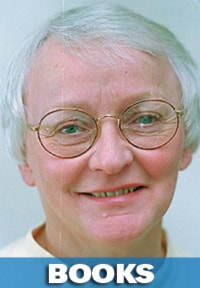The Smartest Kids in the World
By Amanda Ripley $32.00
Simon & Schuster Publishing
Maybe you think a book about the education of our children is not your cup of tea but if your children are in school right now, at any grade, this would be a good, though slightly scary reading choice.
Amanda Ripley has been a reporter for Time and other magazines. When she dipped into facts and figures regarding school graduates, she asked the question: why were some kids learning so much-and others learning so little?
She decided to examine schools in United States, Korea, Poland and Finland. To do this, she involved four students Kim, Eric, Tom and Jenny. These were 15-year-old Americans who went as students to the four countries. She hoped to acquire information from the “inside.”
In the spring of 2000, a third of a million teenagers in 43 countries sat down for two hours and took a test named PISA (Program for International Student Assessment). It was designed to measure the kind of advanced thinking and communication skills that people need to thrive in the modern world. Its authors were looking for the ability to think creatively.
The results showed Finland as the leader. Germans were below average in the developed world in reading, math and science! The U.S. ranked below Greece and Canada.
PISA revealed that spending was not the answer — everything depended on what teachers, parents and students did together.
In Finland, student teachers who graduate at the top third of their classes, from one of eight prestigious teacher-training universities, get hired to teach. In America, those students wanting to play football at college had to achieve higher academic standards than those entering education faculties.
So how do those achieving countries do it?
“Students whose parents had read to the children regularly in their early elementary years performed a year and a half ahead of those whose parents had not.”
Of course this could be done in any country at no cost, but there must be the will and the time. The attitude to learning held by the general public is the key.
This book follows the four American students.
Jenny and Eric are in Korea, where the pressure to excel on exams is mind numbing. Once a year, the entrance exams are written and the whole country holds its breath. Korean high school students are driven to learn.
Tom visited Poland. He was an avid reader but he was not good at math. In math, the United States scored 26th in the world on PISA. “Math is the language of logic ... a disciplined, organized way of thinking.”
Economic imperatives have taught those students in Poland, Finland and Korea that rigour in learning math, science and writing and reading put them ahead in a changing world.
Amanda Ripley says that children everywhere deserve to be taught by the best-educated, best trained professionals in the world.
Canada’s PISA score was pretty high, but ask employers if we could do better.
Peggy Freeman is a local freelance books reviewer.
